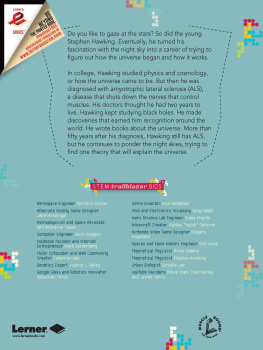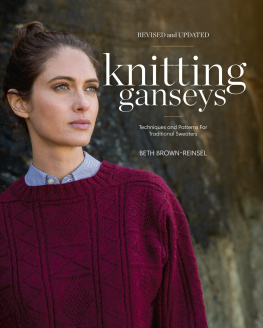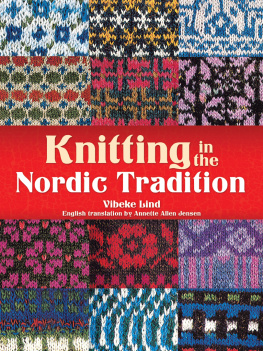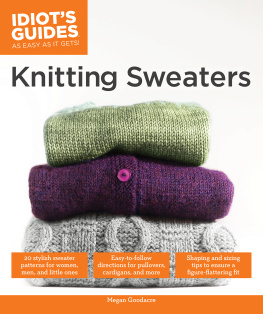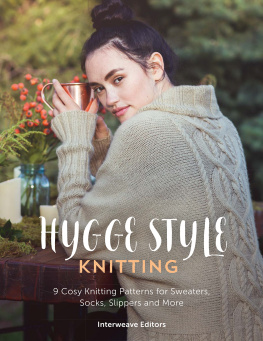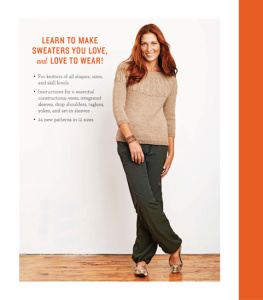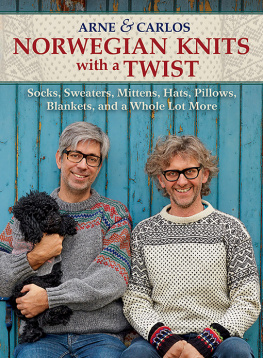KNITTING SWEATERS
FROM AROUND
THE WORLD
18 HEIRLOOM PATTERNS
IN A VARIETY OF STYLES AND TECHNIQUES
Kari Cornell, Editor

First published in 2012 by Voyageur Press, an imprint of MBI Publishing Company, 400 First Avenue North, Suite 300, Minneapolis, MN 55401 USA
2012 Voyageur Press
All rights reserved. With the exception of quoting brief passages for the purposes of review, no part of this publication may be reproduced without prior written permission from the Publisher.
The information in this book is true and complete to the best of our knowledge. All recommendations are made without any guarantee on the part of the author or Publisher, who also disclaims any liability incurred in connection with the use of this data or specific details.
We recognize, further, that some words, model names, and designations mentioned herein are the property of the trademark holder. We use them for identification purposes only. This is not an official publication.
Voyageur Press titles are also available at discounts in bulk quantity for industrial or sales-promotional use. For details write to Special Sales Manager at MBI Publishing Company, 400 First Avenue North, Suite 300, Minneapolis, MN 55401 USA.
To find out more about our books, visit us online at www.voyageurpress.com.
Editor: Kari Cornell
Design Manager: James Kegley
Layout: Mandy Kimlinger
Photography: rau+barber
Stylist: Libby Fransen
Hair and makeup: Angelia
Front cover: Photography by rau+barber
: vintage postcard, Voyageur Press Archives
: vintage postcard, Voyageur Press Archives
: Domestic thriftA study from real lifeIreland, by Charleton H., c. 1904, Library of Congress Prints and Photographs Division, #LC-USZ62-123755
: vintage postcard, Voyageur Press Archives
: Navajo woman, holding yarn, c. 1904. 120925, Library of Congress, Prints and Photographs Division, #LC-USZ62-120925
Digital edition: 978-1-61058-662-7
Softcover edition: 978-0-7603-4265-7
Library of Congress Cataloging-in-Publication Data
Knitting sweaters from around the world : heirloom patterns in a variety of styles and techniques / Kari Cornell, editor.
pages cm
Includes bibliographical references and index.
Summary: Knitting Sweaters from Around the World brings together a sampling of patterns from Scandinavia, Europe, the United
Kingdom, Ireland, the East, and the West, featuring creative works from well-known designers--Provided by publisher.
ISBN 978-0-7603-4265-7 (alk. paper)
1. Knitting--Patterns. 2. Sweaters. I. Cornell, Kari A.
TT825.K66 2012
746.432--dc23
2012005912
ACKNOWLEDGMENTS

A book of this sort is an ambitious endeavor, and it wouldnt have been possible without the hard work and creative know-how of many talented designers. A big thank-you to Dawn Brocco, Beth Brown-Reinsel, Donna Druchunas, Candace Eisner Strick, Sue Flanders, Gretchen Funk, Kate Larson, Melissa Leapman, Cynthia LeCount Samak, Hlne Magnsson, Heather Ordover, Kristin Spurkland, and Pinpilan Wangsai. Im thrilled with the variety of fun patterns in this collection, and I feel honored to have had the opportunity to work with each contributor. Kudos go to Donna Druchunas for once again digging into the enticing history of knitting to write a most interesting introduction to the book. Im grateful to Rita Greenfeder for her technical editing expertise. A big thank-you to rau+barber for the top notch photography, to stylist Libby Fransen for her keen eye for detail, and to hair and makeup artist Angelia for making the models look great. Thanks to Becky Pagel, James Kegley, Mandy Kimlinger, and the rest of the design team for all that they do to make Voyageur Press books look their best.
CONTENTS
INTRODUCTION
By Donna Druchunas
Although legend has it that Jesus wore a seamless sweater knitted in-the-round, in reality, knitting was not invented until several centuries later. Originally used to make socks, mittens, hats, and many other small projects, knitting was first used to make the various styles of shirts worn as outerwear that we know of as sweaters today sometime between the seventeenth and nineteenth century.
Knitters made shirts as early as the fourteenth century, but these were worn as undergarments. Even the blue silk shirt knitted in an allover knit-and-purl pattern at a gauge of 22 stitches per inch (yes, per inch, not per 4 inches!) worn by Englands King Charles I when he was executed in 1649 was likely made to be worn as an undershirt.
Danish blouses with knit-and-purl patterning were the first sweaters made to be worn as outer garments. Woolen nightshirts called nattrjer were commonly worn by people of all classes for centuries. Those who could not afford two separate garments wore a vest or bodice over the knitted shirt during the day. The earliest nattrjer were worn by both men and women. Over time, men stopped wearing them, and the nattrjer evolved into a short, body-hugging style that accentuated a womans figure and complemented the traditional Danish womans costume.
The word sweater was coined in the nineteenth century by British sportsmen who wore the knitted garments while riding horses and rowing. Before that, sweaters were known as jumpers, jerseys, or frocks. Today, the word jumper is still used to refer to a knitted pullover in most of the English-speaking world.
One of the first cardigans, defined as knitted jackets that open in the front and are normally secured with buttons, was made in Germany and worn by Count Palatine Ottheinrich, who died in 1559. The word cardigan, however, refers to the 7th Earl of Cardigan, James Thomas Brudenell, who wore a knitted jacket during the Crimean War in the 1800s and is credited with making the style famous.
These earliest sweaters were knitted in-the-round, on multiple double-pointed needles, producing seamless garments that were custom made to fit the wearer. Sweaters made with multiple colors, such as Norwegian pullovers, were usually knit as plain tubes and cut open to create neck and armhole openings, while others made with single-color texture patterns, such as British fishermens ganseys, were shaped as they were knitted.
Later, most often when garments were being made specifically for sale or publication, traditional designs, like Aran cable sweaters, were knit flat rather than in-the-round to make it easier for production knitting and to create multiple sizes. In the nineteenth and twentieth centuries, dressmaking techniques were often used in sweater design; sweaters were knitted in flat pieces and sewn together to allow for more complicated shaping and a more contemporary and stylish fit.
Some of the designs in this book, like the Cowichan-Inspired Swallows & Ivy Wrap Cardigan on , which is an updated version of an early-twentieth-century idea, are modern knitting designs.


